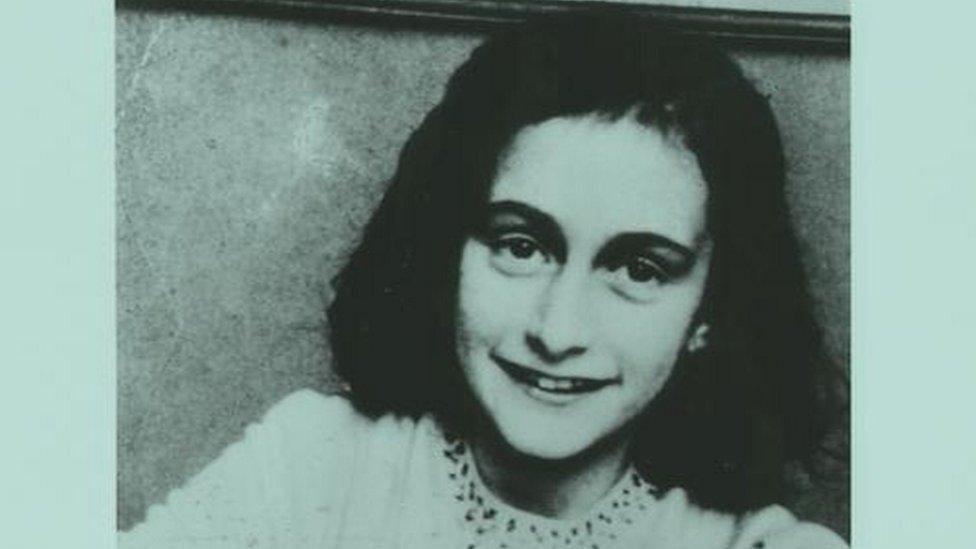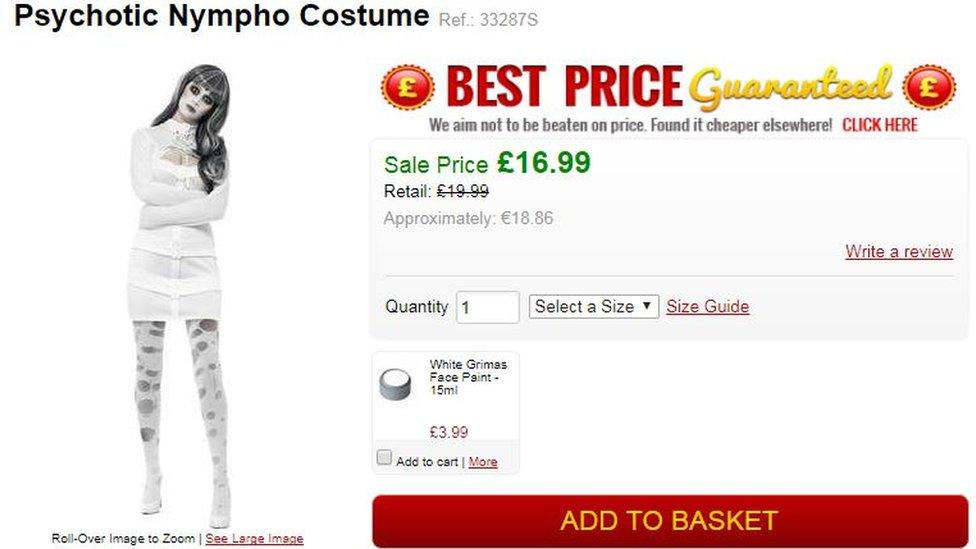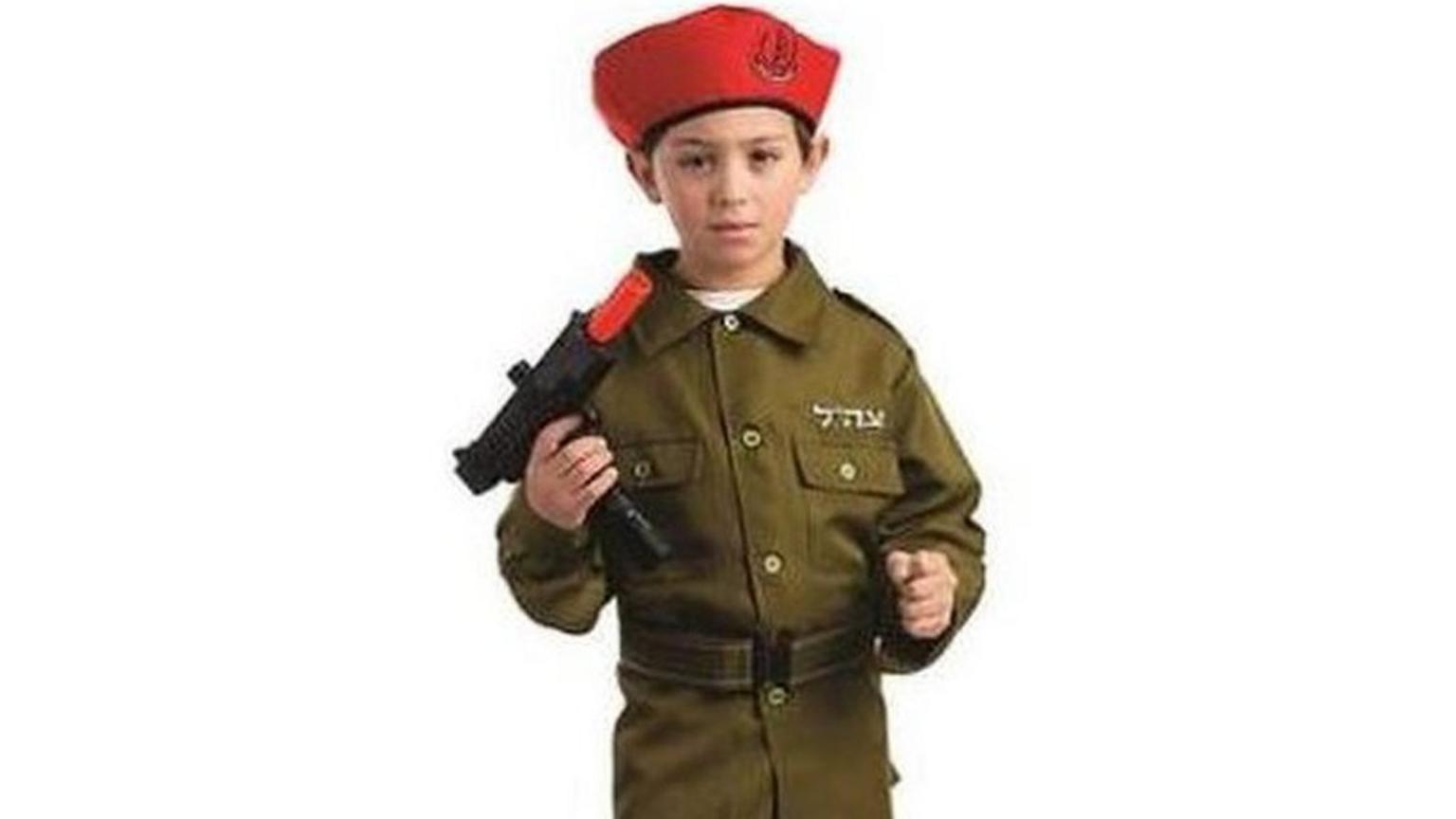'Anne Frank' children's costume sparks controversy
- Published

Anne Frank, who became a symbol of courage, died at the age of 15
Online retailers are removing a children's costume from websites after facing a backlash over its portrayal of teenage Holocaust victim Anne Frank.
Several sites have ceased selling the outfit, though others continue to market it as a "World War Two evacuee girl".
The costume - a green beret, blue dress and brown satchel - has been criticised on social media for being insensitive.
Anne Frank's famous diary tells of her life as a German Jew in hiding in Nazi-occupied Amsterdam in World War Two.
Its account of the two years her family spent living in a secret annexe of her father's business premises have made her a household name around the world, and she has come to symbolise courage, optimism and determination.
The Franks were eventually betrayed, arrested and transported to the Auschwitz camp in Nazi-occupied Poland.
Anne and her sister Margot were later taken by train to the Bergen-Belsen concentration camp in northern Germany in early 1945. They died just months later.
Otto Frank, Anne's father, was the only family member to survive the war.
People have been taking to Twitter to share their outrage at how such a symbolic figure could be used by fancy dress companies and advertised on websites among a catalogue of Halloween costumes.
Allow X content?
This article contains content provided by X. We ask for your permission before anything is loaded, as they may be using cookies and other technologies. You may want to read X’s cookie policy, external and privacy policy, external before accepting. To view this content choose ‘accept and continue’.
Images shared on social media show the costume was initially advertised on sites such as HalloweenCostumes.com - which uses the Twitter handle @funcostumes, external - as a "WW2 Anne Frank Girls Costume".
"Now your child can play the role of a World War Two hero," the original description reads. "It comes with a blue button-up dress, reminiscent of the kind of clothing that might be worn by a young girl" at the time, it adds.
Carlos Galindo-Elvira, Arizona regional director of the Anti-Defamation League, tweeted that there were better ways to commemorate Anne Frank.
"We should not trivialise her memory as a costume," he wrote, external.
Another user, Lola, wrote that marketing Anne Frank in such a way was "absurd".
Allow X content?
This article contains content provided by X. We ask for your permission before anything is loaded, as they may be using cookies and other technologies. You may want to read X’s cookie policy, external and privacy policy, external before accepting. To view this content choose ‘accept and continue’.
Halloweencostumes.com later removed the outfit and a spokesman for the retailer, Ross Walker Smith, apologised for "any offence it may have caused".
"We sell costumes... for many uses outside of the Halloween season," Mr Walker Smith wrote, adding that user feedback had been "passed along".
Allow X content?
This article contains content provided by X. We ask for your permission before anything is loaded, as they may be using cookies and other technologies. You may want to read X’s cookie policy, external and privacy policy, external before accepting. To view this content choose ‘accept and continue’.
The product has also disappeared from the Walmart website.
However, other sites such as Amazon have been selling the outfit without any reference to Anne Frank, calling it a World War Two "evacuee girl costume, external", described as "perfect for carnivals, theme parties and Halloween".
The latest controversy is not the first to involve a Halloween costume.
In 2015, US supermarket Walmart caused outrage for stocking an Israeli army Halloween outfit for children at a time of spiralling violence between Israel and the Palestinians.
In 2014, tens of thousands of people took to social media to debate whether an Ebola-themed Halloween costume was making light of the tragic health epidemic afflicting West African countries.
- Published13 October 2017

- Published27 October 2015

- Published16 October 2014
